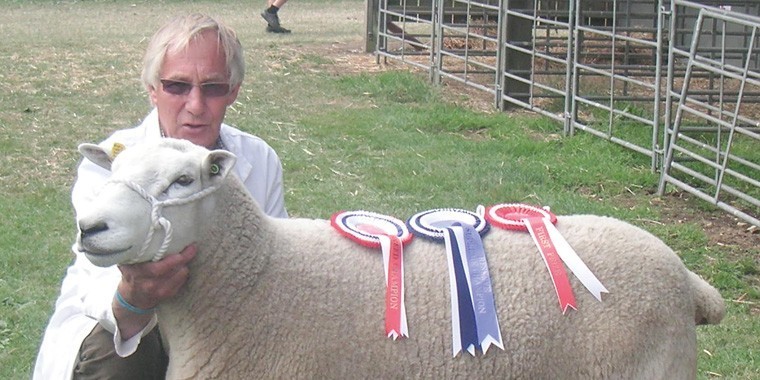For any cyclical calendar of events, it is always difficult to know where and when the year starts and finishes.
Ask any group of sheep producers and some will say that their year begins at lambing. For others it’s tupping, but for me it is always at weaning.
To me weaning is when I can finally calculate my true lambing percentage, when I know how both lambs and ewes have performed and when I can start planning for the start of the next production year.
This year, for me at least, really does support the old adage “better a roast lamb than a boiled one” – i.e. that lambs do better in a hot dry year than a wet one. In spite of being very tight for grass on several occasions over the past few months, my lambs have grown on remarkably well and at weaning have a lovely bloom on them, a group that are a pleasure to look at every day.
The shearlings look just as good, carrying just the right condition for the time of year, or at least those shearlings that remain with me. I have sold out of shearling ewes already and several rams have gone, the first one going to its new home in May.
Selling the shearling ewes has provided a nice fresh bite to wean the ewe lambs on to, and the recent rains have freshened up a paddock for the ram lambs that I am retaining. The poorer ram lambs, pink noses, scurs, wrong style of wool etc have already been sorted and sold through Ashford Market, selling surprisingly well for pure bred Lleyn ram lambs and making £84 a head at 40 kilograms.
The selection criteria for selling was more on breed points than on condition for slaughter, and I do still have a few that I felt were not quite ready, but they will go with the next filtering, so that eventually only the best eight to 10 ram lambs will be reared on. Now that we have weaned, once the ewes have settled down, it will be time to start making up the flock for next tupping season. Having probably sold more ewe tegs that I should have done, I only have a few to come into the flock. But looking at the ewes and this year’s lambing and veterinary records, there are not many obvious candidates for culling, even though there are some “oldish” ewes in the flock.
Not that age is necessarily a barrier to future breeding performance just as long as they are sound in teeth, feet and udders. The older ewes tend to be the most productive and least problematical, even if the younger ones are probably (if I’m doing the job right)genetically superior.
Longevity certainly significantly reduces replacement costs: in the past I have had ewes at 12 years old quite happily rear twins. My best ever ewe produced for me nine crops of lambs and reared 23 lambs. She was culled at 11 years old due to mastitis, but still with all of her teeth – not very long, but all there.
To get back to where I was, when the ewes have been sorted they will all be body conditioned scored (BCS), to inform their management and feeding over the rest of the summer. The aim being to get them all at a target 3.5 BCS for tupping, not that they will need a lot of management. With the recent rains and a good, fresh, flush of grass they should keep ticking over quite nicely and do what is required quite happily on the grass they have in front of them. Visually they all look to be at about 2 to 2.5 at the moment, but they will still need to be handled to confirm BCS and, just as long as I can keep them moving steadily forwards, they should all be right on target come October when the tups go in.
My aim is to produce good, milky ewes that will perform and produce good lambs almost entirely off grass/forages, all at the “Lleyn Gold” standard, which is the ability to rear 60% plus of the ewe’s body weight by eight weeks.
I will however still retain a flexible approach to concentrate feeding. With a flock that lambs consistently at about 200% it is asking rather too much of them to do it without any concentrate input, particularly on all permanent pasture.
Going forward we are going to need efficient, sustainable sheep, particularly as we now have Gove and his “Green Brexit” to deal with. We also have an additional “Fox” in the fold, a Fox who seems so desperate to conclude a quick trade deal with the United States that he appears to be happy to sacrifice all sorts of production and food quality standards, a stance that will no doubt generate further problems for us. Watch this space: the next production year and the next dozen or so after that are going to get very interesting – not always easy, but interesting.




